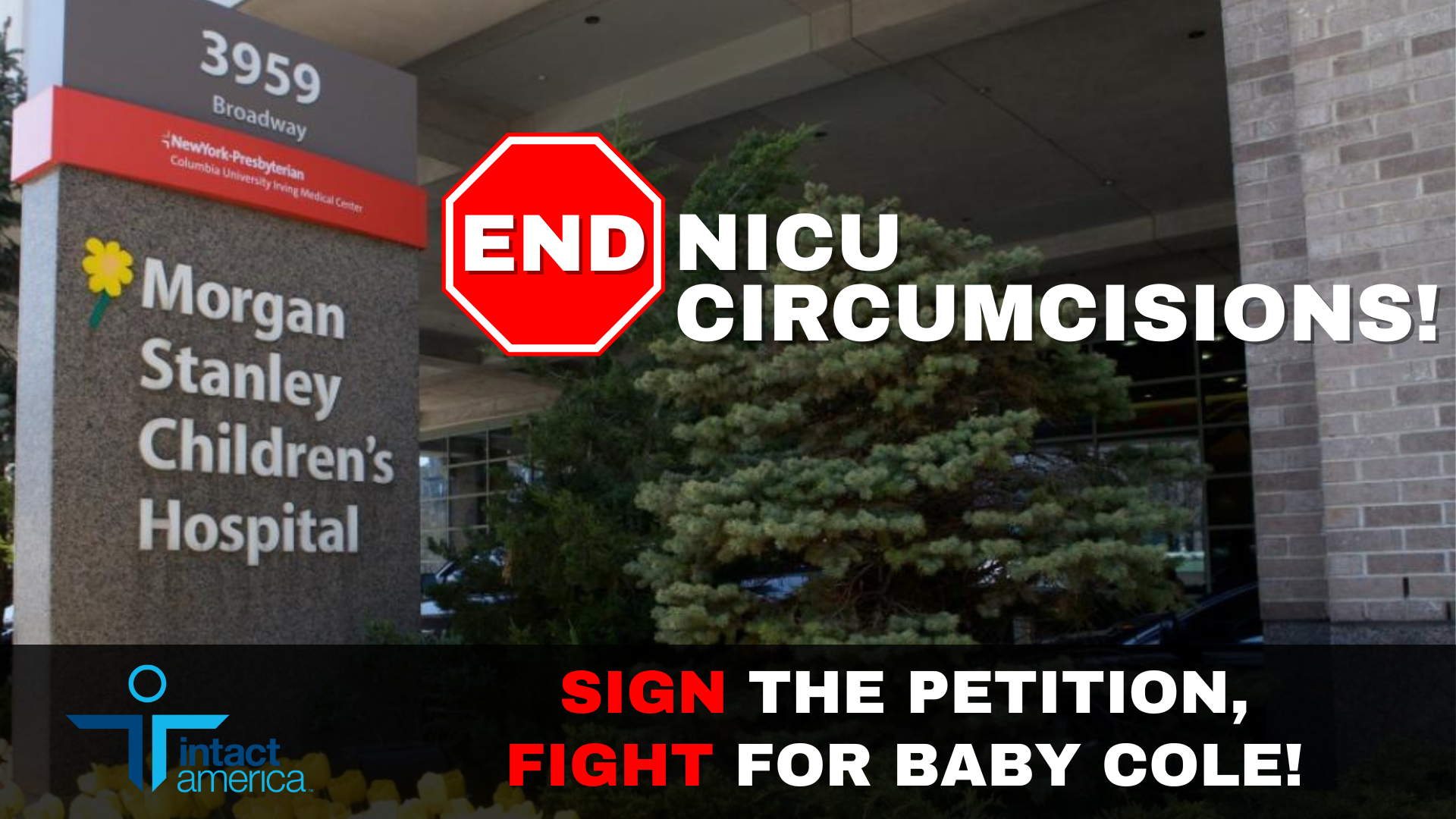HUMAN RIGHTS GROUP CHALLENGES GLOBAL AIDS ESTABLISHMENT TO TELL THE TRUTH:
CIRCUMCISION DOES NOT PREVENT HIV
INTACT AMERICA URGES POLICY MAKERS TO HALT MALE CIRCUMCISION ROLLOUT,
CALLING THE PLAN EXORBITANT, DANGEROUS, AND UNETHICAL
Tarrytown, NY—July 22, 2012
The human rights group Intact America (IA) is urging policy makers attending the 2012 International AIDS Society Conference in Washington, DC, July 22-27, to halt the rollout of mass circumcision campaigns, calling the plan exorbitant, dangerous and unethical.
“The promotion of male circumcision sends the wrong message, creates a false sense of protection, and places women at greater risk for HIV. Men are lining up to be circumcised in the belief that they will no longer need to use condoms,” said Georganne Chapin, Executive Director of IA. “It is extremely disturbing that scarce resources would be squandered on this prevention method when new research shows that the other proven prevention and treatment methods reduce transmission far more effectively. Medical resources need to be devoted to antiretroviral drugs, condom programs, education, and vaccines.”
Various studies show that results from three highly-publicized randomized clinical trials (RCTs) on HIV and circumcision are not applicable to the general population of sub-Saharan Africa or any other region.(1-3) A 2008 study concluded that male circumcision is not associated with reduced HIV infection rates in the general sub-Saharan population.(4) Another recent study analyzed circumcision rates and HIV incidence in South Africa, finding that:”Circumcision has no protective effect on HIV transmission.”(5) “The RCTs are questionable,” says Chapin. “A 2008 study found that increased use of condom promotion is 95 times more cost-effective than male circumcision in preventing new HIV infections.”(6) In Zimbabwe, a country where a mass circumcision campaign is currently underway, the recently released Health Demographic Survey(7) showed the HIV prevalence rate among circumcised males between the ages of 15 and 49 in Zimbabwe to be 14 percent, while for intact (uncircumcised) males it is 12 percent.
A public health officer from the National AIDS Council expressed concern about the high rate of infection among circumcised men, which he attributes to the misconception that circumcision completely shields people from HIV infection. “The number of reports of African males agreeing to circumcision so that they no longer need to use condoms reveals that they are consenting to the surgery without knowing all the facts,” explains Chapin. “The world is desperate for a ‘silver bullet’ to end the HIV epidemic, but male circumcision is not the answer that we have been waiting for.”
“Especially troubling is the extraordinarily high rate of complications from male circumcision in Africa—according to the World Health Organization, there is a 35% complication rate for traditional circumcisions and an 18% complication rate for clinical circumcisions.(8) Africa’s overburdened health care system cannot handle the tens of thousands of complications that would result from these campaigns.”
“We believe it is unethical for circumcision to be carried out on adult males unless fully informed consent has been obtained,” said Chapin.
Intact America also exhibited at the AIDS 2011 conference in Rome, Italy, and at previous conferences in Vienna and Mexico City. Intact America was instrumental in forcing the America Academy of Pediatrics to retract its proposal to re-introduce female genital cutting in the United States in 2010.
About Intact America
Intact America was formed in 2008 to change the way America thinks about neonatal male circumcision. Intact America believes that painful and medically unnecessary surgery to remove healthy genital tissue from non-consenting baby boys violates medical ethics and human rights. Intact America is based in Tarrytown, N.Y. Visit Intact America at www.intactamerica.org, on Facebook, and on Twitter.
2. Bailey RC, Moses S , Parker CB, Agot K, Maclean I, Krieger JN, et al. Male circumcision for HIV prevention in young men in Kisumu, Kenya: A randomised controlled trial. Lancet. 2007;369(9562):643-56.
3. Gray RH, Kigozi G, Serwadda D, Makumbi F, Watya S, Nalugoda F, et al. Male circumcision for HIV prevention in men in Rakai, Uganda: A randomised trial. Lancet. 2007;369(9562):657-66.
4. Garenne M. Long-term population effect of male circumcision in generalised HIVepidemics in sub-Saharan Africa. African J AIDS Res, 2008;7(1):1–8.
5. Connolly C, Simbayi LC, Shanmugam R, Nqeketo A. Male circumcision and its relationship to HIV infection in South Africa: results of a national survey in 2002. S Afr Med J 2008;98:789 –94.
6. McAllister RG, Travis JW, Bollinger D, Rutiser C, Sundar V. The cost to circumcise Africa. Int J Men’s Health. 2008;7(3):218-321.
7. ZHDS. Zimbabwe Health Demographic Survey, 2010/2011.
8. Bailey RC, Egesah O, Rosenberg S. Male circumcision for HIV prevention: a prospective study of complications in clinical and traditional settings in Bungoma, Kenya. Bull World Health Organ 2008;86(9): 669–77.




